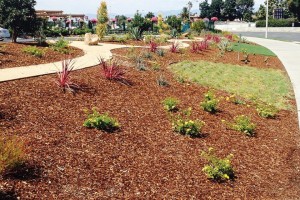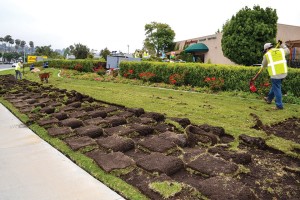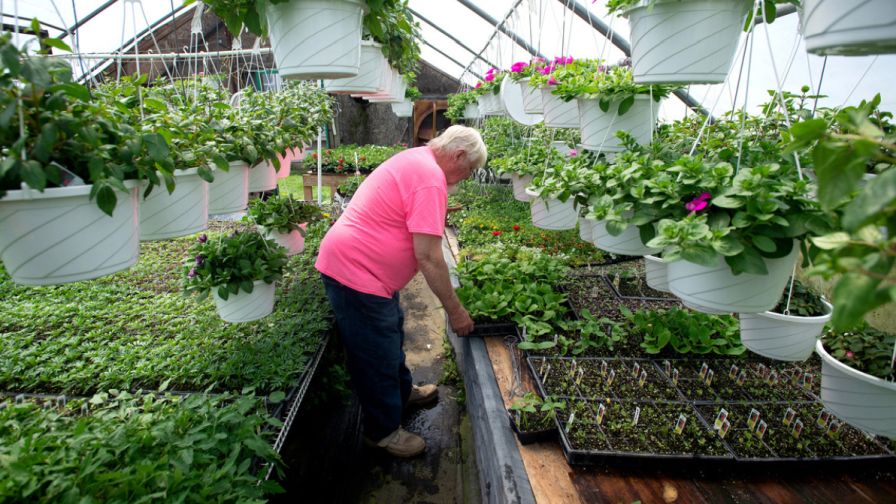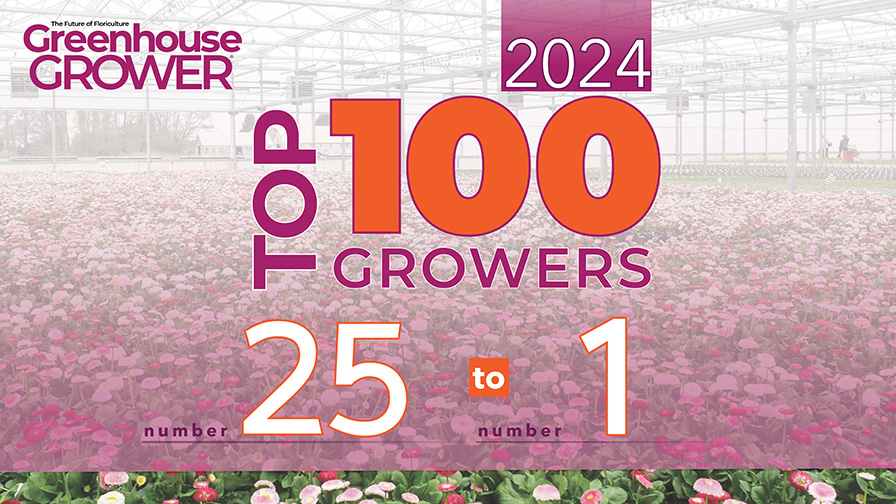Drought Has Triggered A New Normal For The California Landscape

Natural grass areas at Armstrong Garden Centers’ Pasadena and Torrance store locations have been replaced with inspirational demonstration gardens, which are open to customers and the general public to view a variety of water-saving options, for both experienced and novice gardeners.
California is now entering its fifth year of the worst drought in 500 years, with no end in sight. Weather experts predict the current drought will continue into 2016, despite optimistic projections of increased rain patterns this winter caused by a strong El Niño ocean current.
Residents have fully bought in to the emergency, and embraced Governor Jerry Brown’s April 1 mandate to reduce water usage by 25 percent. Even after an above-average hot summer, the state has exceeded its goal, with a per-month average of 28 percent water reduction. Some of the ways homeowners are being encouraged to reduce their outdoor water use are concerning, but the good news is, drought-tolerant landscaping and awareness of water-wise gardening is on the rise.
Cash For Grass Rebates Have Landowners Trading In Their Lawns
When Governor Brown’s water reduction mandate was announced in April, consumer reaction was reflected in the sales at retail, says Jim Hessler, Altman Plants’ director of West Coast operations.
“I think a lot of it was because consumers didn’t know what the regulations meant,” Hessler says. “As we got past the first few months, there was an impact, but not as dramatic as April and May.”
When you lose sales in the peak spring season, it’s hard to make up that difference in July, Hessler says. The biggest area impacted was annuals, followed by perennials. But Altman’s water-efficient plant categories were fine.
For a number of years, Altman has carried a program of water-wise flowering plants, including California natives, Australia natives and a number of Mediterranean plants. The plants are well-adapted to the dry California climate, and consumers are starting to take notice of the efficiency and beauty of drought-tolerant landscapes, with water restrictions and mandates in place.
Some areas in California are paying homeowners up to $3.75 per square foot to rip out their traditional lawns, and replace them with drought-tolerant landscapes. And for the unmotivated consumer, there are even some services offering to do it for them, for free, in exchange for rights to the rebates.
Meanwhile, the California Water Commission approved sharp new limits on the amount of water that can be used on landscapes surrounding newly constructed buildings, from houses to businesses and schools. The revised ordinance will limit grass to about 25 percent of a home’s combined front, back and side yards in all new construction. Drought-tolerant plants can be used on the remaining landscape space.
California’s Investment In Diversifying Water Paying Off
Over the past 15 years, lawmakers and authorities at California’s water districts have been working to diversify the water resources available to residents.
In San Diego County, a water desalination plant is set to open this fall. While it’s an expensive source of water, the plant will make a difference in water availability in an area where there is minimal groundwater supply. The cost of the water is estimated at $2,200 per acre foot, compared to the roughly $1,500 costing growers now.
“In Southern California, there continues to be a lot of investment to improve water availability and conservation measures,” Hessler says.
“This not the first drought we’ve been through. When you open the tap, water still comes out — it’s not quite as much of a panic mode as the media makes it out to be. It was serious, but the work and investment that’s been done has made a difference. It’s important that we learn from it and continue to produce plants with less water and find ways to conserve.”
Growers Are Doing Their Part
Water conservation is not new to growers in the Western states. Across the U.S., water retention ponds and water treatment systems that allow growers to catch rain water and recycle and reuse it are quickly becoming mainstream at grower operations. Innovations within the industry continue to improve growers’ water use, and growers are finding that by reducing the amount of water they use, and watering plants when needed instead of on a set schedule, plants are healthier.
Altman Plants captures and recycles water at all of its facilities, yet it also relies on an allocation of municipal surface water. Its Salinas property is the only one that uses groundwater.
Olive Hill Greenhouses has added reclaimed water systems at its Olive Hill location and is working on developing a water retention system, soon to come online, at its Green Canyon location.
Further up the Coast, Rocket Farms in Half Moon Bay captures and reuses water, and its purchase of municipal water for irrigation purposes has decreased dramatically, according to Head Grower Corwin Graves.
“Because of the decisions that were made several years ago to capture and reuse rainwater, the drought has impacted our operation much less than it would have otherwise,” Graves says. “That said, the current water situation has challenged us to look at ways to further minimize our impact, since groundwater sources are a finite resource.”
This includes training employees who are responsible for irrigation decisions to water efficiently, Graves says.
“We’ve spent quite a bit of time reviewing irrigation timing and frequency, recognizing that each crop has a specific need and that there really is such a thing as too much water for most crops,” he says.
Hessler agrees, saying giving adequate training and responsibility to employees is of utmost importance.
Smith Gardens, with four locations in three water-restricted states — California, Oregon and Washington — has a water retention and recycling system at its Pacific Plug & Liner location in Watsonville, Calif. The operation is working to bring all of its locations online with water retention and recycling systems, focusing first on its Aurora, Ore., location, where it’s expanding, says Lars Nilsen, executive vice president of sales and marketing.
Village Nurseries Wholesale, a specialty grower for landscape contractors, architects and designers, is spearheading efforts to keep California green and colorful with its Save Water-Stay Green campaign for the fall planting season. The company recommends a wide variety of low-water-use, low-maintenance shrubs, grasses, groundcovers and trees that consumers and landscape professionals can use.
“Currently, about 70 percent of what we grow performs well with less water, once established,” says Village Nurseries’ CEO David House.

Most of the California cities participating in rebate programs to rip out lawns have included requirements for landowners to install approved drought-tolerant landscapes, rather than leaving bare lots, and some cities have banned the use of artificial turf.
Retailers Take Action To Save Water And Set A Good Example
Armstrong Garden Centers, the retail arm of Armstrong Growers, is setting an example for consumers by converting the large, traditional lawn areas at 11 stores to a more water-wise landscape.
“We have a responsibility to show how simple it can be for Californians to have a beautiful lawn and garden while still being reasonable with limited resources,” says Armstrong Garden Centers President Monte Enright. “As a responsible horticulturist and California native, I know that less water doesn’t mean we have to settle for less beauty in our neighborhoods and communities.”
Armstrong Garden Centers demonstrates how to have a healthier garden and landscape by watering less, but more effectively, and still staying in compliance with current water regulations. It provides services including water wise and garden consultation services, and home visits from an expert to help identify ways to reduce outdoor water usage, such as sprinkler audits, soil moisture retention tests, plant reviews and other water-saving opportunities.
Big box retailers are hosting water-wise educational sessions, and working in cooperation with the water districts to instill best practices for water savings, which growers support, Hessler says.
Walmart has installed WaterPulse capillary mats in its 3,700 stores nationwide after the mats were proven to reduce daily water usage by 90 percent, from 4,000 gallons to 400 gallons.
WaterPulse CEO Jim Heffernan says the company is working rapidly to trial the mats at The Home Depot and subsidiaries of Lowe’s stores. Starting with the big boxes, word spreads quickly about the savings, he says, but WaterPulse is working to get the mats in independent garden centers, as well.
WaterPulse is also trialing its capillary mats at a half dozen major grower operations on the West Coast and in the South. The technology is the same as the mats used at retail, he says, but can be manufactured in larger sizes to cover a larger amount of bench space at wholesale.
Consumers And Growers Face A New Normal In The West
In the Pacific Northwest, the governors of Oregon and Washington have declared drought emergencies within the past year.
Nilsen says while Smith Gardens hasn’t experienced any restrictions, and the drought hasn’t seemed to impact sales thus far, the anticlimactic heat has. Starting off a banner year for sales, the operation was on track for 4 percent growth, but by the end of the growing season, that number looks more like 1 percent.
While conditions in the Pacific Northwest haven’t yet reached the dire proportions of California’s climate, climatologists have said warmer, drier conditions in these typically rainy states are the new normal, and lawmakers are suggesting landowners need to adjust to the reality of using less water for the long term. For now, that means water restrictions on agriculture, municipalities leasing water from farmers and homeowners under strict mandates to reduce water use.
It’s Time To Take A Holistic Approach To Water
Ze’ev Barylka, director of marketing for Netafim, an irrigation company serving a number of industries including agriculture, says it’s time for the U.S. to take on a holistic approach to water. The company, headquartered in Israel, has been meeting with lawmakers like Governor Brown in California, as well as media sources like the Los Angeles Times and NBC, to communicate that the approach to water management doesn’t need to be all or nothing. As a company, its message is one of growing more with less.
Barylka says the conversation currently in drought-stricken areas regarding which activities are more important for water use creates negativity, and the industry needs to be more active to control the conversation around watering for outdoor uses.
“What we’re seeing here is a battle of users,” he says. “There is talk in the media about prioritization of water. What is more important: take a shower, wash your car or grow 5 acres of almonds? This creates a very unhealthy dialog. When you look at the Israeli approach to water management, the need to save water is the obligation of everyone who uses water. We need to come up with a similar, holistic approach to water management in the U.S.”










